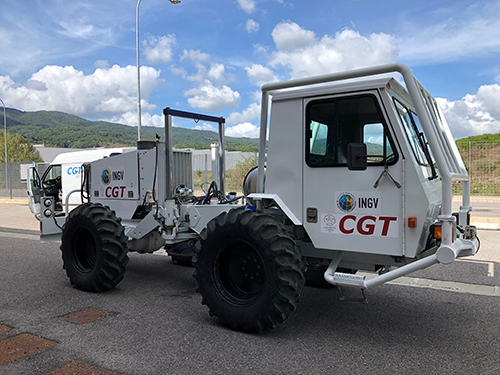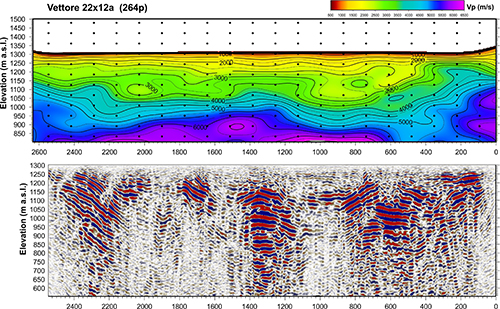High-resolution active seismic is one of the main methods of non-invasive investigation of the subsoil. This technique allows the exploration of goals deep up to 1-2 km with high spatial resolution. The MINIVIB, an instrument for which the researchers Paolo Marco De Martini, Fabio Villani and Luigi Improta are responsible in the Geology and Geotechnology Laboratory, is a safe and totally non-invasive vibratory energization system and its use is also possible in urbanized areas , on roads and in cultivated areas. With the MiniVib, INGV's potential for research and exploration of the subsoil increases considerably, thanks to the wide range of applications of specific and transversal interest to the Earthquakes, Volcanoes and Environment departments.

The MiniVib is a heavy wheeled vehicle weighing 6 tons that carries and manages a vibrating mass of 168 kg driven by a hydraulic mechanism capable of developing a maximum force of 27kN.

Result of a recent active seismic experiment with Minivib, carried out in October 2017 in the basin of Castelluccio di Norcia (PG) through the seismic ruptures of the Mw 6.5 earthquake of 30 October 2016. The wave speed model is represented in the upper part P (in m/s) obtained with tomographic inversion of the first arrival times. In the lower part the reflection section is represented, which highlights the internal structure of the basin (modified from: Villani et al., 2019). Seismic profiling and electrical resistivity tomography, AGU Fall Meeting, San Francisco, 12 December 2019, T41H-0360



